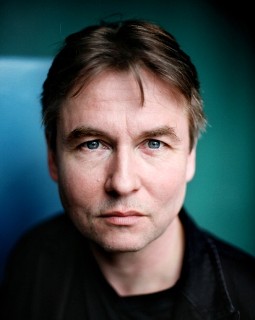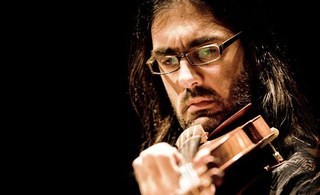|
Back
Less Dada and More Dazzlement New York
David Geffen Hall, Lincoln Center
03/17/2016 - & March 18, 19, 2016
Jean Sibelius: Violin Concerto in D Minor, Opus 47
Dmitri Shostakovich: The Age of Gold (Suite), Opus 22a
Esa-Pekka Salonen: Karawane (New York Premiere)
Leonidas Kavakos (Violinist)
New York Choral Artists, Joseph Flummerfelt (Director), New York Philharmonic Orchestra, Alan Gilbert (Conductor)

E.-P. Salonen (© Katja Tähjä)
Like coming upon a meadow of Monarch butterflies or an active Indonesian volcano, one anticipates a new work by Eka-Pekka Salonen to be gorgeous, exotic, original, brilliantly colored, and simply breathtaking. His Karawane, given its New York premiere last night was not new (the NY Phil co-commission was given its world premiere two years ago in Zurich). But its wonders almost fit those foregoing adjectives.
I have three serious caveats about Karawane, none of which detract from its immediate effects. And those effects, from the first choral whispers to the endless coloring (the whole string section strumming and pizzicato-ing over the low tenor voices) to solos (oboe and cello) and full ensembles, to the chorus almost shouting and then offering melodies over the percussion to an ending which was unashamedly loud, bombastic, bringing the house down...well, it was a fantastic effort.
And what was this all about? It could have been a truncated Requiem (some sections resembled Stravinsky’s Symphony of Psalms) or an epic, a Schoenberg Gurrelieder or Sibelius Kullervo.
It was neither. And thus the caveats.
Karawane was set to the nonsense words of the famous Dada poem, by Swiss poet George Ball. (Thus its Zurich premiere). So the choral “words” were nonsense syllables. I.e. “anlogo bung/blago bung,/bosso fataka”.
This was hardly original. Aristophanes fooled around with new words, as did Rabelais and Sterne and of course Lewis Carroll’s Jabberwocky. But Mr. Salonen’s challenge was to use Ball’s nonsense words so seriously that listeners would inevitably try to pin feelings on them.
Noam Chomsky would have written a few books on the challenge. But for us, the words, sung, as always with eloquence by the New York Choral Artists, were the same sounds we would have heard had they been singing in Mr. Salonen’s native Suomalainen or Bartók’s Magyar or even Orff’s Medieval Latin. Only a tiny fraction of the New York audience would understand the meanings.
The second caveat is a semantic one. Music by definition is the only Art which is Dada by itself. The painting of a house looks like a house, non-Dada poetry refers (however obliquely) to Things. Music, though, unless a gimmick like a Strauss tone-poem or Honegger’s Pacific 231, or the obvious circus music from last night’s Age of Gold, has no referential, no semiotic meaning whatsoever.
Stravinsky in his Poetics affirmed that music doesn’t “say anything”, but that is nonsense. Actually, it says masses of stuff, it makes you feel massive of emotions.
It’s just that music simply doesn’t “say” things which we can point to that are outside of music itself.
So Esa-Pekka Salonen’s attempt to put Dada words with Dada music is a superfluity.
The third caveat? Who gives a damn? This is gorgeous music, flamboyant and sensitive music. Whatever the chorus was singing, the result was a musical tenderness and exaggeration, a thematic wonderland with shadows of motives returning and disappearing, and an ever-pulsing creative soul beneath and above the skin. A joy, real joy.
Conductor Alan Gilbert’s joy with music of this and the last century is palpable. He is part of the Salonen generation, and his movements were electric and infectious. We are lucky to have him for the next few months, and blessed that Mr. Salonen will be composer-in-residence for the next two years.

L. Kavakos (© Courtesy of the Artist)
Admittedly, some in the audience came and stupidly left in the intermission after the Sibelius Violin Concerto. And as usual, Leonidas Kavakos gave the most convincing and ardent performance of the first Finnish masterpiece of the evening.
Mr. Kavakos doesn’t give that shimmering virtuosic sound of, say, Anne-Sophie Mutter, who played this last year. Instead, it is a darker, more basic violin sound. Oh, Mr. Kavakos is certainly the virtuoso. In the first movement cadenza, the tone changed from those dark colors to blazing colors. And by the insistent dance-rhythms of the finale, he showed both beautiful tone and the most passionate ardent feeling.
By the end of the concert, though, it was Mr. Salonen’s work which was most memorable. Perhaps his most original element is that nothing is “typical” Salonen. His inspirations and voices are both remarkable and dazzling.
Harry Rolnick
|